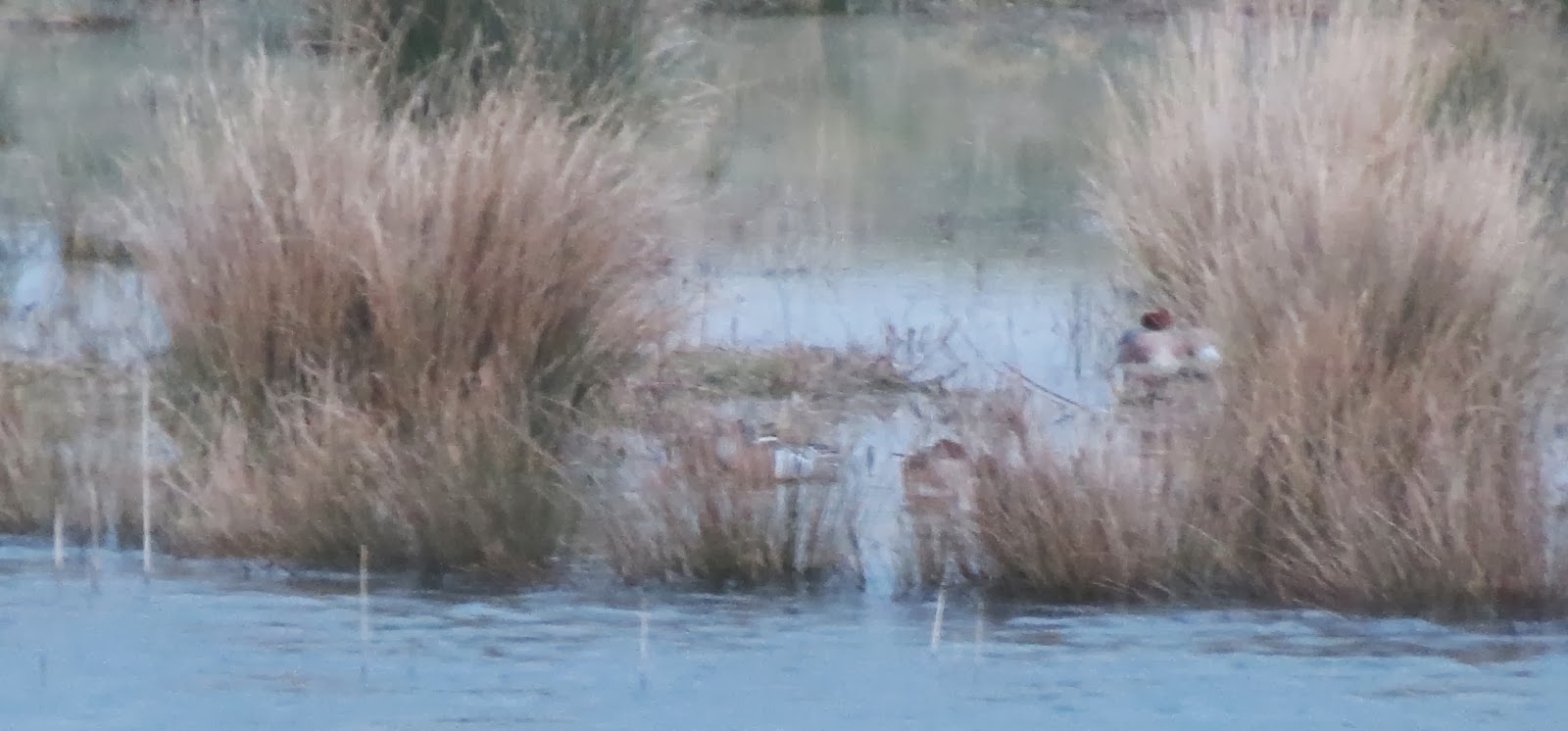TUESDAY 25 FEBRUARY
A band of heavy rain passed across the
Chilterns Region throughout the morning, eventually clearing away to the east
early afternoon. The temperature remained at about 6 degrees C after the rain
had passed, with the skies clearing and the sun coming out.
During the rain, the highlight of my garden
watch was a female BULLFINCH at the sunflower heart feeder, although 2 Collared
Doves and a female Common Blackbird were both welcome.
Following a conversation with Dave Bilcock,
I decided to head down to TRING RESERVOIRS, where up to 5 Common Stonechats had
been recorded since Saturday.....
Confirming with the finder Ian Williams of
directions, I was very pleased to locate a female COMMON STONECHAT in the
hedgerow bordering the Rushy Meadow at WILSTONE, showing very well in the mid
afternoon sunshine (see images below). I could not locate any of the others, DB
having seen two females along the fenceline in Cemetery Corner. I was also very
pleased to see 4 YELLOWHAMMERS in the hedgerow along the Dry Canal, as well as 8
Goldfinches, 5 Chaffinches, a LINNET, 14 MEADOW PIPITS and 3
SKYLARKS.
Song Thrushes were in full song, including
one in The Old Rectory garden in Drayton Beauchamp, while the orchard Poplars
held a flock of 210 Fieldfare and 55 Redwings. A total of 4 BULLFINCH was noted,
as well as 6 Blue Tit, 3 Great Tit, 2 Long-tailed Tit and 4 Wrens.
Large numbers of Fieldfares and Redwings in the Poplars
The highlight on the reservoir was the first
COMMON SHELDUCK of the year - swimming not far from the Drayton Hide. Other
wildfowl included 4 Common Goldeneye (including a first-year drake) as well as 4
Mute Swan, 40 Greylag Geese, 255 Wigeon, 41 Gadwall, 72 Teal, 104 Shoveler, 86
Pochard, 127 Tufted Duck, 302 Coot and 7 Great Crested Grebe. The Drayton Bank
was bustling with activity with 13 Sinensis Cormorant nests being
occupied and 7 Grey Heron (40 & 16 birds being counted
respectively).
The first COMMON SHELDUCK of the year..
The gull roost numbered about 970 birds by
1700 hours - with around 940 Black-headed and 31 Common.
MARSWORTH RESERVOIR reedbed held both
singing Reed Bunting and CETTI'S WARBLER, while I caught the last 42 CORN
BUNTINGS to fly in to roost. Three Song Thrush were in full song (as well as an
additional bird by the road on Startop's), with Common Blackbird, 5 Chaffinch, 3
Robin and 3 Wren also noted. A pair of Little Grebe were on the water, along
with 5 Great Crested Grebe, a pair of Mute Swan, 12 Tufted Duck, 2 Coot, 4
Moorhen, 28 Canada Geese and a Grey Wagtail; 14 Lapwing flew over whilst 4 WATER
RAIL squealed from the reedbed. Despite watching until dark, there was no sign
of either Bittern or Barn Owl.
The Dabchick pair
On STARTOP'S END, just 53 Mallard, 73 Tufted
Duck, 1 Pochard, 46 Coot, 5 Great Crested Grebe and a KINGFISHER.
Sinensis flighting in at dusk over Wilstone



























